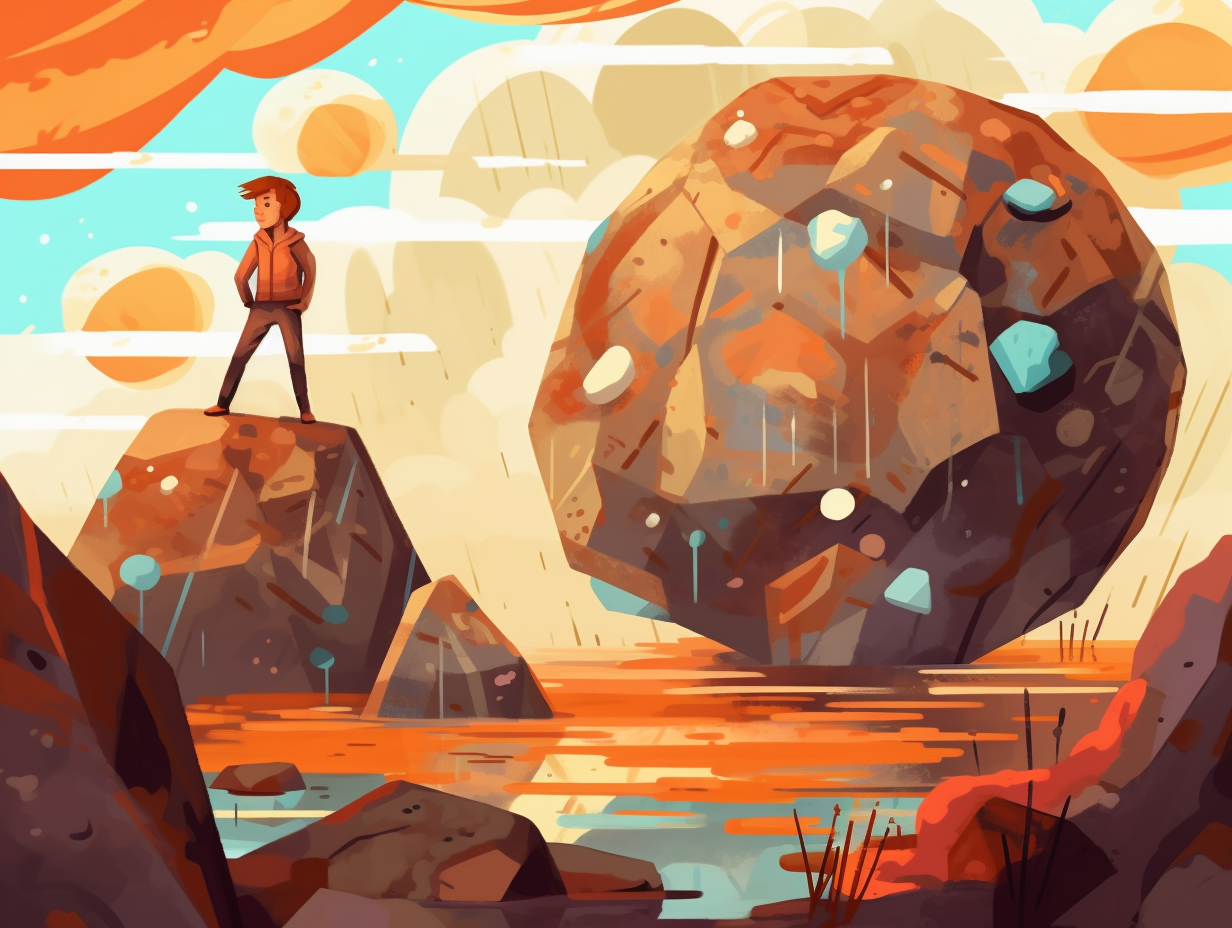Discover Earth's Hidden Secrets: Top 13 Fun Facts About the Mantle You Never Knew

1. Diamonds' Underground Journey
You know what they say, diamonds are a girl's best friend – but who knew they had to mingle with the earth's innards before shining on that proposal ring? Well, buckle up for this geological gossip: Diamonds are actually formed deep within the mantle, approximately 93 to 124 miles (150 to 200 km) below the surface, and are brought to the surface by magma due to tectonic processes like plates splitting apart. Talk about an underground treasure hunt!
Source => space.com
2. Tectonic Speed Dating
Ready for a tectonic twist on speed dating? Our Earth has been playing this geological game for eons: The mantle's convection currents are constantly creating and consuming tectonic plates at plate boundaries, resulting in a slow creeping motion that moves these plates at a speed of a few centimeters per year!
Source => en.wikipedia.org

Did you know that tectonic plates shape our planet's most breathtaking landscapes? Discover the connection between these geological giants and the formation of mountains, oceans, and more! 🌋🏔️🌊
=> Fun Facts about Tectonic-Plates
3. Mantle's Rock Band
Did you hear about the mantle's underground rock band that only does deep cuts? Their specialty is peridotite vibes: This unique volcanic rock forms exclusively at depths greater than 40 km and can be brought to the surface through volcanic activity.
Source => allthescience.org
4. Gooey, Slow-Moving Mantle
Talk about slow and steady wins the race! The Earth's mantle is so thick and gooey it'd give the world's most stubborn peanut butter a run for its money: With a viscosity of around 10^21 Pa s, the mantle flows almost like a solid, making the geological timescale equivalent of watching paint dry seem like an adrenaline-pumping roller coaster ride.
Source => link.springer.com

5. Diamonds & Peridot's Extreme Formation
Diamonds might be Superman's worst nightmare, but they're a miner's dream come true: Forming at scorching high temperatures in the mantle, about 20 to 150 miles below the Earth's surface, diamonds and peridot are the only two gemstones that crystalize in such extreme depths rather than in the Earth's crust, with diamonds whizzing through magma to make it up here, exploding into kimberlite pipes. If that weren't speedy enough, our favorite sparkly stones might've never survived to grace a proposal.
Source => thegemmuseum.gallery
6. Mantle's Hidden Water Park
Who needs a water park when you've got Earth's mantle: This not-so-typical splash zone contains crystals holding as much water as all of Earth's oceans combined, but it's not in liquid or vapor form. Instead, water exists as hydroxide ions trapped in the crystalline structure of rocks in the mantle's transition zone, playing a crucial role in volcanic eruptions, seafloor spreading, and mountain-building.
Source => nationalgeographic.org
7. Molten Rock Dance Floor
The Earth's crust is really just enjoying a slow danceathon on a molten rock dance floor: The movement of tectonic plates is caused by thermal convection in the mantle, where heat from the core rises towards the crust and cooler rock near the surface sinks back, creating a convection current that moves plates, causes earthquakes, and even shifts continents over millions of years.
Source => study.com
8. Luxurious Earth-Mattress
If the Earth's mantle were a mattress, it would be a luxurious adjustable bed fit for geology royalty: varying in thickness from 100 to over 200 kilometers, this dynamic layer's composition, density, and seismic properties can be quite diverse, thanks to the wild geological processes like subduction, delamination, and upwelling that make our planet's insides as intriguing as they are mysterious.
Source => researchgate.net
9. Pressure-Cooking Earth's Depths
Feeling the pressure of a hot date? You've got nothing on the Earth's mantle: This fiery realm relies on the strength of periclase, a magnesium oxide, even though it's surrounded by the more abundant bridgmanite, a magnesium silicate. For years, scientists misjudged this deep partnership, but now we know the true power dynamic happening within Earth's scorching depths, with pressures up to 135 gigapascals and temperatures reaching thousands of degrees Fahrenheit.
Source => caltech.edu

10. Molten Lasagna Center
If the Earth had a hearty, molten lasagna center, the mantle would be its gooey, cheesy layer: This geological wonder, sandwiched between the crust and core, plays a crucial role in creating volcanic eruptions and fabulous igneous rocks, a dance of tectonics that still has scientists eagerly unraveling its mysteries.
Source => opengeology.org
11. Escape Room of Earth's Mantle
If the Earth's mantle were an escape room, the mysterious wet solidus and SCEP would be the clues everyone's dying to solve: As it turns out, the wet solidus temperature ranges between 950°C and 1000°C at 3 GPa, and the SCEP lies between 3 and 4 GPa – now ain't that handy for understanding melting processes in the mantle wedge and the role of the deep hydrous partial-melting zone?
Source => agupubs.onlinelibrary.wiley.com
12. Nature's Secret Water Stash
Ever wondered where Mother Nature hides her water stash? We've just found her secret underground ocean, only it's a bit different than you'd expect: The Earth's mantle contains a reservoir of water, with crystals in the transition zone holding as much water as all the oceans on its surface, but instead of liquid water, the water is in the form of trapped hydroxide ions which play a crucial role in mantle convection, volcanic eruptions, and seafloor spreading.
Source => nationalgeographic.org
13. Cooking Up Disasters in Subduction Zones
In the underworld's kitchen, where tectonic plates are the master chefs of disaster: subduction zones cook up explosive volcanic eruptions and shattering earthquakes as one plate slips below another, melting and creating magma under heat and pressure.
Source => manoa.hawaii.edu
Related Fun Facts




















